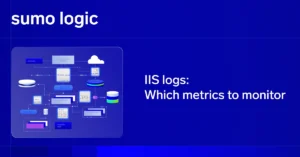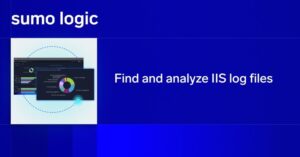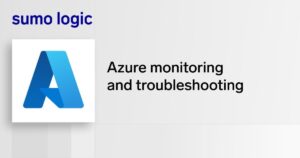*Authored by Kevin Keech, Director of Support at Sumo Logic, and Graham Watts, Senior Solutions Engineer at Sumo Logic
Many Sumo Logic customers ask, “How can I use Sumo Logic for support and customer success teams?” If you need a better customer experience to stay ahead of the competition, Sumo Logic can help.
In this post, I will describe why and how support and customer success teams use Sumo Logic, and summarize the key features to use in support and customer success use cases.
Why Use Sumo Logic For Support and Customer Success Teams?
- Improved Customer Experience
-
-
- Catch deviations and performance degradation before your customers report it
- Using dashboards and scheduled alerts, your CS and Support teams can be notified of any service impacting issues and can then reach out and provide solutions before your customers may ever know they have a problem
- This helps your customers avoid experiencing any frustrations with your service, which in the past may have led them to look into competitive offerings
- Improve your Net Promoter Score (NPS) and Service Level Agreements (SLAs)
- Alert team members to reach out to a frustrated customer before they go to a competitors website or log out
- Catch deviations and performance degradation before your customers report it
-
- Efficiency and Cost Savings – Process More Tickets, Faster
-
-
- Sumo Logic customers report an increase in the number of support tickets each team member can handle by 2-3x or more
- Direct access to your data eliminates the need for your Support team to request access and wait for engineering resources to grant access
- This leads to a higher level of customer satisfaction, and allows you to reallocate engineering time to innovate and enhance your product offerings
- Your support reps can perform real-time analysis of issues as they are occurring, locate the root of a problem, and get your customers solutions quicker
- Customers report that using LogReduce cuts troubleshooting time down from hours/days to minutes
- As your teams and products grow, team members can process more tickets instead of needing to hire more staff
- Sumo Logic customers report an increase in the number of support tickets each team member can handle by 2-3x or more
-
- Security
-
- Eliminate the need to directly log into servers to look at logs – you can Live Tail your logs right in Sumo Logic or via a CLI
- Use Role Based Access Control to allow teams to view only the data they need
How to Use Sumo Logic For Support and Customer Success Teams
Key features that enable your Support Team, Customer Success Team, or another technical team while troubleshooting are:
- Search Templates
-
- See here for a video tutorial of Search Templates
- Form based search experience – no need for employees to learn a query language
- Users type in human-friendly, easy to remember values like “Company Name” and Sumo will look up and inject complex IDs, like “Customer ID” or some other UUID, into the query, shown to the right:
- LogReduce
- Reduce 10s or 100s of thousands of log messages into a few patterns with the click of a button
- This reduces the time it takes to identify the root cause of an issue from hours or days to minutes
- In the below example, a bad certificate and related tracebacks are exposed with LogReduce
- Dashboards
-
- Dashboard filters – Auto-populating dashboard filters for easy troubleshooting
- TimeCompare – Is now ‘normal’ compared to historical trends?
The example below shows production errors or exceptions today, overlaid with the last 7 days of production errors or exceptions:
- Dashboard filters – Auto-populating dashboard filters for easy troubleshooting



